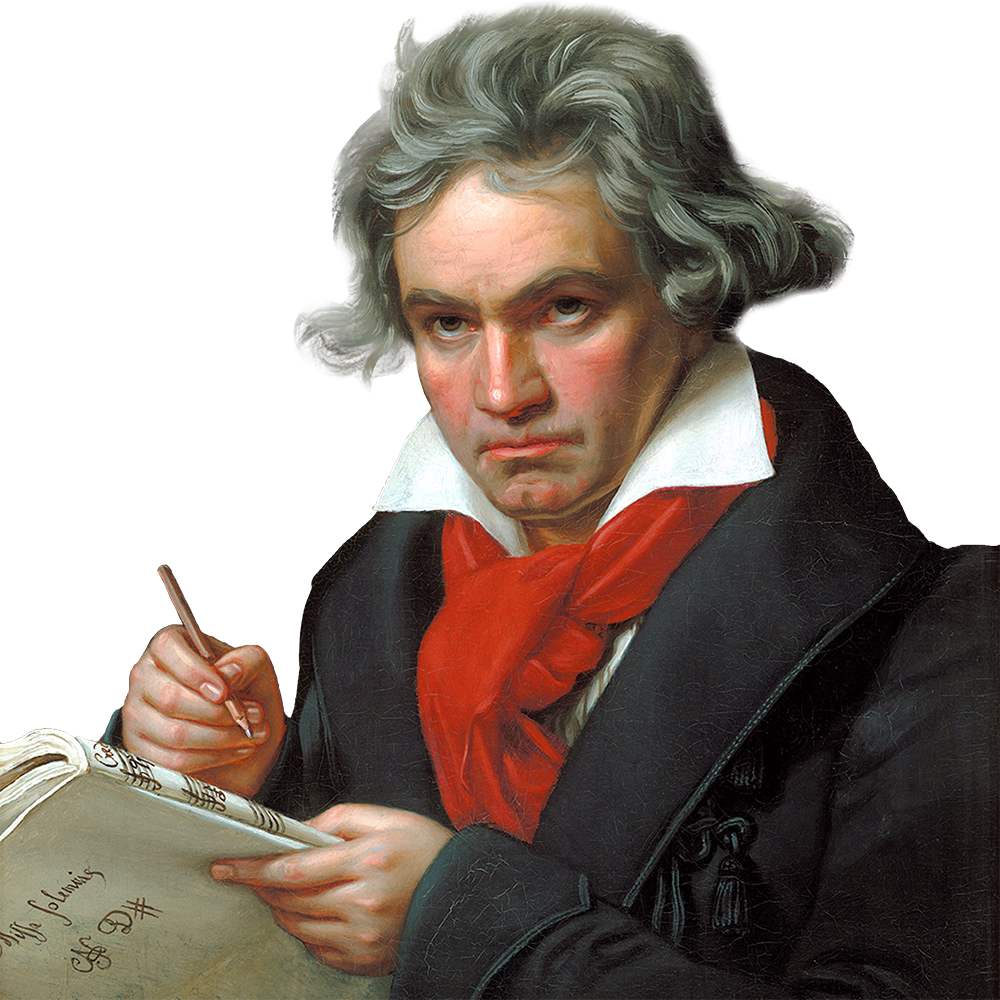
|
Violin Concerto in D major, Op. 61 Allegro ma non troppo |
Composed: Estimated length: |
|
Born on December 16, 1770, in Bonn (in present-day Germany); Died on March 26, 1827, in Vienna, Austria |
|
|
First performance: December 23, 1806, in Vienna, with Franz Clement as the soloist. |
|
|
First Nashville Symphony performance: March 18, 1952, with Guy Taylor conducting at War Memorial Auditorium. |
|
Ideas for the Violin Concerto can be found in the same notebook that Ludwig van Beethoven was using for the Fifth Symphony. While the latter required several years to be hammered into being, he produced the concerto in a matter of months, in 1806. But Beethoven did keep his soloist, a friend named Franz Joseph Clement who had been a former prodigy, waiting until the very last minute; he completed the score barely in time for the premiere two days before Christmas.
Beethoven had written his piano concertos up to this time for himself as soloist, but here he tailored this piece to the musical personality of Clement, who was acclaimed for the delicacy and tender refinement of his style—aspects that Beethoven highlights throughout the piece. Clement introduced the Violin Concerto in Vienna’s Theater an der Wien, where he was concertmaster, on December 23, 1806—a bit over a year after Napoleon’s forces had first taken the city.
But for all the celebrity of the soloist, the work did not catch on right away. While not as outwardly radical as the Eroica, the Violin Concerto was path-breaking in its own way and may have disappointed concertgoers expecting a mere display piece. There are few documented performances over the next three decades or so, and the Violin Concerto had to wait for such advocates as Joseph Joachim.
“The profound influence of French ‘revolutionary’ music on Beethoven’s style is reflected principally in his cultivation of motivic relationships, his handling of instrumental structures, and in the inspiration he derived from its general character and sonorities,” writes Robin Stowell in a monograph on the work. He details how Beethoven specifically drew on his knowledge of the exponents of the French violin school as established by the émigré Italian (and friend of Cherubini) Giovanni Battista Viotti. In the Violin Concerto, Beethoven “transform[ed] some of their idiomatic features from simple bravura to embellishments of profound musical ideas.”
WHAT TO LISTEN FOR
The span of the opening movement is enormous—almost as long as many an entire classical concerto or symphony. Instead of epic adventure or daunting proportions, however, it conveys a sense of leisurely enjoyment of its ideas. Beethoven draws attention to this quality precisely by delaying the soloist’s entrance, whose preliminary dalliances keep us waiting yet further before getting around to the songful first theme. At the same time, characteristics familiar from the more outwardly “heroic” works of Beethoven tightly integrate the musical discussion: the mysterious pattern of repeated beats, played by the timpani at the outset, becomes an obsessively recurring rhythm and, when articulated by the violins for the first time (as a D-sharp), a harmonically puzzling presence that momentarily shadows the music’s serene cast.
Beethoven also shows a preoccupation with the violin’s upper range, which he uses to rapturous effect in the Larghetto. The meditative calm of this music centers around a gentle G major theme that itself does not vary or evolve but is repeatedly presented, in different instrumental guises, while the soloist weaves ecstatic decorations around it. A brief cadenza bridges the way directly to the Rondo, which combines aspects of a rustic, hunting party (the rousingly scored horns) with the main theme’s powerful invitation to the dance—a pastoral return to earth following the stratospheric heights of the preceding movements.
Along with solo violin, scored for flute, 2 oboes, 2 clarinets, 2 bassoons, 2 horns, 2 trumpets, timpani, and strings
− Thomas May is the Nashville Symphony's program annotator.